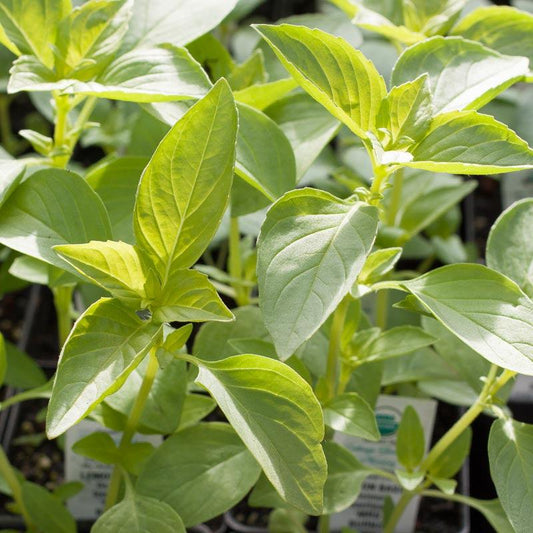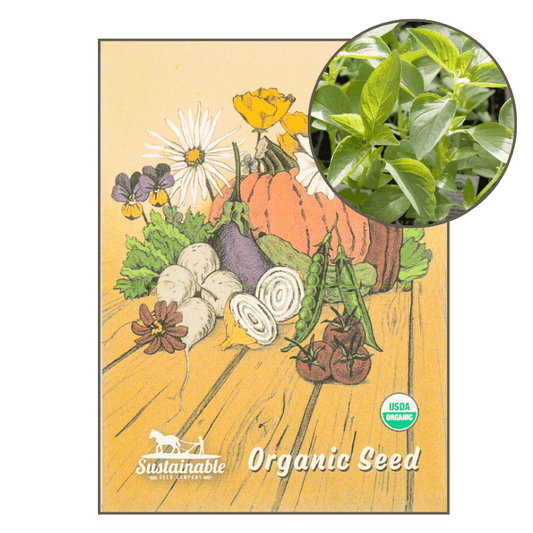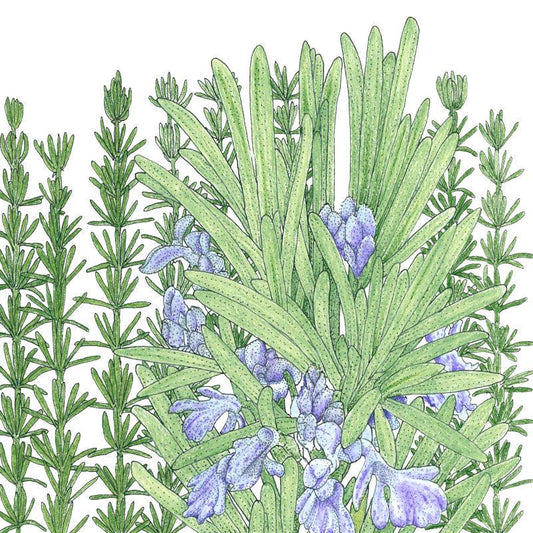How to Propagate Herbs from Cuttings and Grow Them Indoors All Winter Long
Winter may be on its way, but that doesn’t mean you have to say goodbye to fresh herbs! Instead of letting your perennial herbs go dormant, you can propagate them from cuttings and bring them indoors to enjoy a continuous supply of fresh, aromatic herbs throughout the colder months. Many herbs root quickly in water, while others do best in a soilless propagation medium like perlite.
If you've never propagated herbs before, now is the perfect time to get your feet wet in the propagation pool and learn this simple yet rewarding gardening skill. With a little patience and care, you can expand your herb garden for free and enjoy homegrown flavor all winter long.
The Best Time to Take Herb Cuttings
• The ideal time to take stem cuttings from your herbs is between August and October when plants are still actively growing. However, you can take cuttings any time of year as long as the plant is healthy and not dormant. Late summer and early fall are especially great for propagation because the plants have stored up energy, making them more likely to root quickly and thrive indoors.


• By rooting cuttings before your outdoor herb plants die back, you can establish new herb plants that will be ready to flourish indoors just as their parent plants go to sleep for the winter.
How to Take and Root Herb Cuttings
Step 1: Gather Your Supplies
Before you start cutting, make sure you have the following items:
• Sharp snips or a sterilized knife (for clean cuts)
• Sterilized glass jars or drinking glasses (clear ones work best)
• Room temperature tap water
• Potting mix or a soilless propagation medium (for herbs that don’t root in water)
• Small pots (for transplanting once roots develop)
Step 2: Select and Cut Healthy Stems
• Choose a sturdy, non-flowering shoot from a healthy herb plant.
• Make a clean cut 3–6 inches down the stem, ¼ to ½ inch below a leaf node.
• Remove the lower leaves on the cutting, leaving only a few at the top.
Taking multiple cuttings from each plant increases your chances of success. Some cuttings may fail to root, so having extras ensures that you end up with healthy transplants.
Rooting Herb Cuttings in Water
Many herbs will readily root in water, requiring little more than a glass jar and regular water changes.
Steps to Root Herbs in Water
• Fill a glass jar with room temperature water, making sure it’s deep enough to submerge the lower part of the cutting but not the leaves.
• Place the herb cutting in the jar, ensuring the water reaches just below the lowest leaves.

• Set the jar in a warm, bright location (indirect sunlight works best).
• Change the water every 1–2 days to prevent bacterial growth and keep the cutting fresh.
In 7–14 days, check for roots! Once they are ¼ to ½ inch long, transplant the cutting into a small pot filled with well-draining soil.
Best Herbs to Root in Water
• Basil
• Mint
• Pineapple Sage
• Rosemary
• Patchouli
• Lemon Verbena
Rooting Herb Cuttings in Soilless Medium
Some herbs don’t root well in water and prefer a soilless medium like perlite, vermiculite, or sand. This method provides extra stability and aeration, helping cuttings establish roots more effectively.
Steps to Root Herbs in Soilless Medium
• Fill a small pot with a mix of perlite and vermiculite or another light, well-draining medium.
• Moisten the medium with water to keep it damp but not soggy.
• Dip the cut end of the herb cutting in rooting hormone (optional, but helpful).
• Stick the cutting into the medium, burying the bottom 1–2 inches.
• Cover the pot with a plastic bag or humidity dome to maintain moisture.
• Place in indirect light and mist regularly. In 2–3 weeks, roots should appear!
Best Herbs to Root in Soilless Medium
• Sage
• Oregano
• Thyme
• French Tarragon
• Lavender
Transplanting Rooted Cuttings
Once your herb cuttings have developed strong roots, it’s time to transplant them into pots. Choose a container with good drainage, and use a high-quality organic potting mix.
• Plant the cuttings at the same depth as they were in water or the propagation medium.
• Water immediately after transplanting to help the roots adjust.
• Place the pots in a sunny window or under grow lights if needed.
With proper care, these indoor herbs will provide fresh flavor for your kitchen all winter long!
Caring for Your Indoor Herbs
• Light – Most herbs need 6–8 hours of bright, indirect sunlight daily. Supplement with grow lights if necessary.
• Watering – Keep the soil evenly moist, but avoid overwatering. Herbs in pots dry out faster than those in the garden.
• Temperature & Humidity – Maintain a consistent temperature of 60–70°F. Use a humidity tray or mist the plants occasionally to prevent dryness.
• Harvesting – Trim your herbs regularly to encourage new growth and keep them from becoming leggy.
Final Thoughts
Propagating herbs from cuttings is an easy, cost-effective way to expand your garden and keep fresh, homegrown herbs available year-round. Whether you’re rooting cuttings in water or using a soilless medium, you’ll love how simple it is to multiply your favorite herbs.
So why not give it a try? Bring your herb garden indoors this winter and enjoy aromatic, flavorful, and organic herbs anytime you need them!
Rooting Herb Cuttings & Companion Plants
Learn how to propagate your favorite herbs and enhance your herb garden with companion plants that offer beauty, fragrance, and pollinator support:
-
Organic Coreopsis
Vibrant blooms that attract beneficial insects—perfect for brightening herb propagation areas. -
Organic Jasmine‑Scented Nicotiana
Fragrant flowers that add sensory appeal and encourage pollinators in the garden. -
Organic Aroma Basil
Aromatic and flavorful, this basil is a great candidate for harvesting or rooting when propagating herbs. -
Organic Thai Basil
Distinctively flavorful and easy to root—ideal for propagation and fresh culinary use.
Pairing these companion plants with your propagation efforts not only enhances garden aesthetics but also supports a healthy rooting environment for your herb cuttings.








